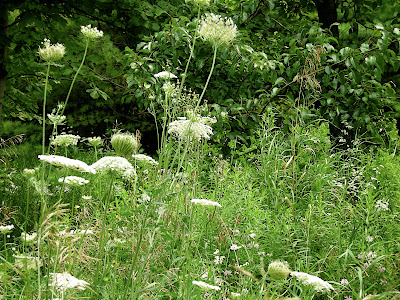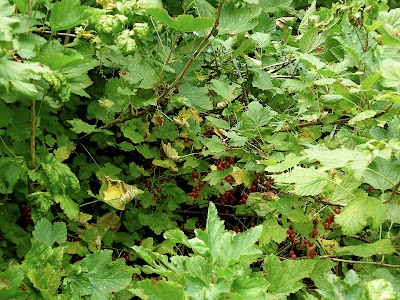I've explored the field around the Funny Farm and smelled everything that I could.
By the way, what's the Funny Farm? It's an atelier and living place of a canadian artist-couple and a mother. The house itself is an artwork, so I'll show you about this in another article. They have great silos and fields around them that used to be used as a farm in old days.
Pine trees are everywhere in the area.

The silo in the back of red clover is a part of the Funny Farm. The freight container is my laboratory. The red clover smells a bit animalic, exotic honey.

White clover. It smells more linalol-like honey than the red clover.

Queen Anne's Lace is now blooming. The local people say that it's a sort of carrot and you can eat the root. The flower has the aldehydic, minty scent that reminds me of carrot.


By being cut regularly, the grass field stays as it is. If it's not cut, a bush starts to grow and it will eventually become a forest. The cut grass is rolled and dried so that it becomes hey. It's normally used for the animals in the farm.

These weeds in the fields are part of the farm's character, because they could stay there by the regular maintenance. This interested me enough that I extracted the smells of a lot of weeds. It fits in the purpose of the project to extract the local smells.

In Holland it's called 'vlierbloesem' . They make syrop with the flower's scent.

Beautiful flower, but no smell.

The flower of garlic. Here it grows as a weed. The local people eat it. The smell is milder than that of its ball that we normally call garlic, but quite identical to it.

Red current hidden in the leaves.
